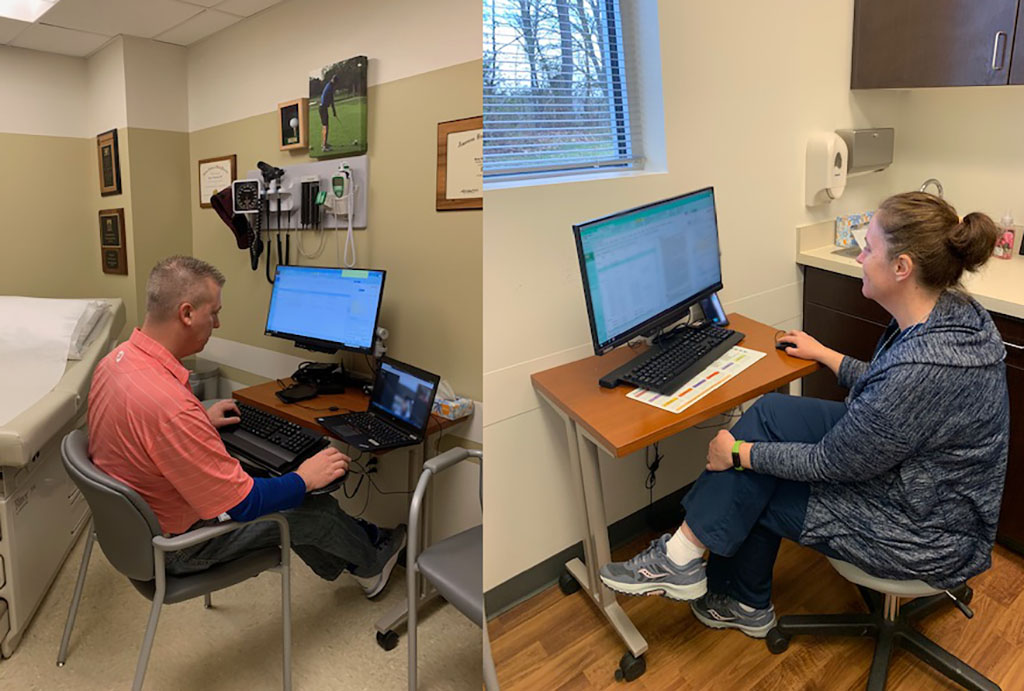CRH Providers Using Telehealth to Conduct Patient Visits
As COVID-19 has affected how many of us go about our daily lives, it has also changed the typical primary and specialty care visit. CRH physicians and staff recognized the need to transform how providers and patients interact, particularly in an effort to stop the spread of COVID-19. In a short timeframe, telehealth services were developed and launched.
Telehealth uses digital technologies, such as computers and mobile devices, to access health care services remotely and manage a patient’s care.
CRH rolled out telehealth on Sunday, March 22, and since that time, more than 3,500 telemedicine visits have occurred. Nearly all CRH primary and specialty care offices are now offering telehealth. “We felt that this was a critical step in preparing the community for COVID-19,” said Lindsay Anderson, MD, one of the physicians who helped lead the telehealth implementation and a primary care physician at Columbus Internal Medicine Associates, a Columbus Regional Health practice.
Dr. Anderson added that while some providers have had to cancel or reschedule in-office appointments, they recognized the need to stay in contact with patients “that we care so much about” during this national public health issue. “Telemedicine has given us a way to check in with our patients on their health needs while protecting them and our staff from potential coronavirus exposure,” Dr. Anderson said.
“Telehealth has enabled me to continue to provide medical care to my patients without putting their health at risk. I appreciate being able to see them as well as hear their voices. This enables me to know that they are doing well during this tough time,” said Tricia Warner, MD, a primary care physician at MyCare Family Med, a Columbus Regional Health practice.
Just like a visit to a primary or specialty care office, there’s a lot more that goes into a telehealth visit in addition to the actual visit. A front office staff member registers and schedules patients, ensures they have the technical components needed to conduct the telehealth visit, and then checks out the patient at the end of the visit. Clinical staff contacts patients to verify medical history, medications, allergies, and other information.
Both providers and the community have been grateful to have telehealth visits – the patients are able to talk with their provider about their concerns, while remaining safely at home. “Patients appear to be very satisfied with still being able to keep their appointments while maintaining social distancing guidelines,” said Dr. Warner.
As with any new technology implementation, there are always challenges that arise, but Dr. Anderson said that the teamwork across CRH has been phenomenal. “I've been blown away by everyone's willingness to step up and resolve problems quickly. Our IT department has been instrumental in getting our providers and patients access to necessary resources very, very quickly,” she said.
While we all must continue to do our part in practicing physical distancing, telehealth is one way that CRH is able to continue to support that effort and still meet the needs of our patients. “I am confident that telemedicine will support our community efforts to keep people home and save lives as the coronavirus pandemic spreads,” said Dr. Anderson.
Want more stories like this? Subscribe to our E-newsletter
Four Sneaky Causes of Back Pain

Are you experiencing ongoing achiness or sudden and sharp back pain? When injury or heavy lifting isn’t to blame, consider these possible culprits.


